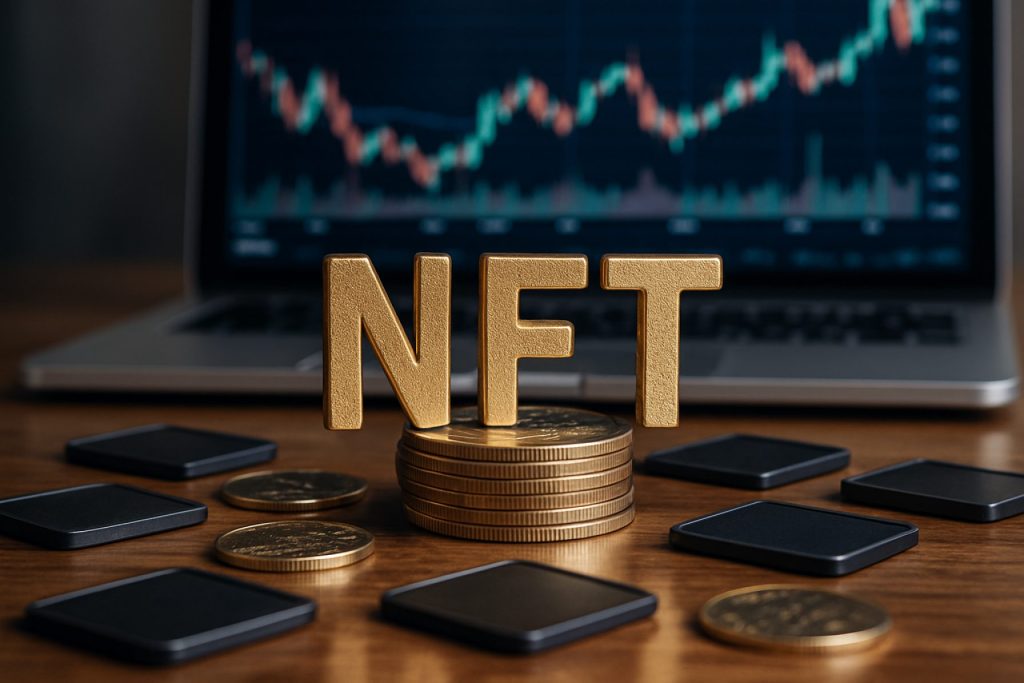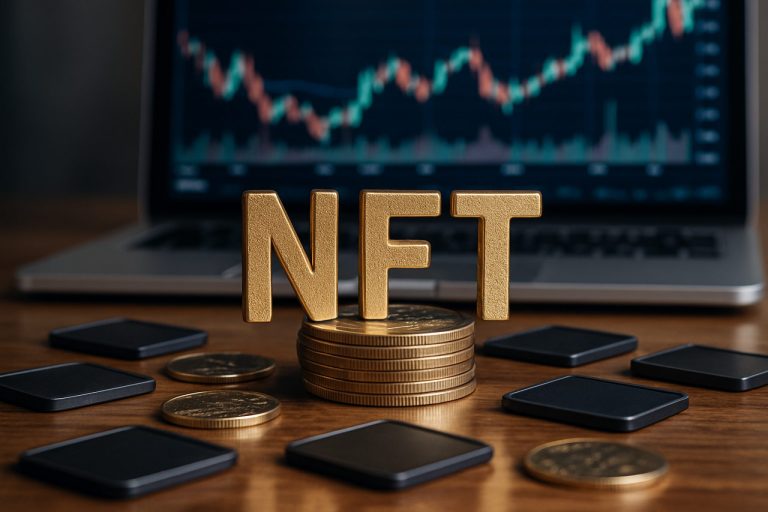
2025 Non-Fungible Asset Fractionalization Platforms Market Report: Unlocking Growth, Innovation, and Investment Opportunities. Explore Key Trends, Forecasts, and Competitive Insights Shaping the Next 5 Years.
- Executive Summary & Market Overview
- Key Technology Trends in Asset Fractionalization
- Competitive Landscape and Leading Platform Profiles
- Market Growth Forecasts (2025–2030): CAGR, Revenue, and Adoption Rates
- Regional Analysis: North America, Europe, Asia-Pacific, and Emerging Markets
- Future Outlook: Innovations, Regulatory Shifts, and Market Expansion
- Challenges and Opportunities: Security, Liquidity, and Investor Engagement
- Sources & References
Executive Summary & Market Overview
Non-fungible asset fractionalization platforms are digital marketplaces and protocols that enable the division of unique, indivisible assets—such as art, collectibles, real estate, and intellectual property—into smaller, tradable ownership shares using blockchain technology. This process, known as fractionalization, allows a broader range of investors to access high-value assets that were previously illiquid or out of reach due to high entry costs. By leveraging non-fungible tokens (NFTs) and smart contracts, these platforms facilitate transparent, secure, and efficient co-ownership and trading of fractions of non-fungible assets.
The global market for non-fungible asset fractionalization platforms is experiencing rapid growth, driven by increasing adoption of blockchain technology, rising interest in alternative investments, and the expanding NFT ecosystem. According to Grand View Research, the global NFT market size was valued at over $20 billion in 2023 and is projected to grow at a compound annual growth rate (CAGR) exceeding 30% through 2030. Fractionalization platforms are emerging as a key segment within this broader market, addressing liquidity challenges and democratizing access to high-value assets.
In 2025, the market landscape is characterized by a mix of established blockchain companies and innovative startups. Leading platforms such as Fractional, PartyBid, and Unic.ly have pioneered the fractionalization of digital art and collectibles, while new entrants are expanding into real-world assets like real estate and luxury goods. Institutional interest is also rising, with traditional asset managers and auction houses exploring partnerships and integrations with fractionalization protocols.
- Key drivers include increased investor demand for diversification, enhanced asset liquidity, and the potential for global, 24/7 trading.
- Challenges remain around regulatory uncertainty, valuation standards, and the need for robust security and governance frameworks.
- Geographically, North America and Europe lead in platform development and adoption, but Asia-Pacific is rapidly catching up, fueled by strong digital asset markets and regulatory innovation.
Looking ahead to 2025, non-fungible asset fractionalization platforms are poised to play a transformative role in both digital and traditional asset markets. Their ability to unlock liquidity, broaden participation, and create new investment products positions them as a critical infrastructure layer in the evolving Web3 and digital finance ecosystem PwC.
Key Technology Trends in Asset Fractionalization
Non-fungible asset fractionalization platforms are at the forefront of transforming how unique, high-value assets—such as fine art, collectibles, real estate, and luxury goods—are owned and traded. In 2025, these platforms leverage blockchain technology to divide ownership of non-fungible assets into digital shares or tokens, enabling broader investor participation and liquidity in traditionally illiquid markets.
A key trend is the maturation of regulatory-compliant platforms that facilitate the fractionalization of real-world assets (RWAs). Companies like Sygnum and tZERO have expanded their offerings to include tokenized shares of fine art and real estate, with robust investor onboarding and compliance mechanisms. These platforms are increasingly integrating with traditional financial infrastructure, allowing seamless fiat on-ramps and off-ramps, and providing institutional-grade custody solutions.
Another significant development is the rise of interoperability standards. Protocols such as ERC-3643 and ERC-1400 are being adopted to ensure that fractionalized tokens can be transferred and traded across multiple marketplaces while maintaining compliance with jurisdictional regulations. This interoperability is crucial for secondary market liquidity, as seen in the growing trading volumes on platforms like OpenFinance and RWA.xyz.
Smart contract automation is also enhancing the efficiency and transparency of fractional ownership. Automated dividend distribution, voting rights, and buyout mechanisms are now standard features, reducing administrative overhead and building investor trust. For example, RealT uses smart contracts to distribute rental income from tokenized real estate directly to token holders.
In 2025, the integration of AI-driven asset valuation and risk assessment tools is further refining the fractionalization process. Platforms are employing machine learning models to provide real-time pricing, fraud detection, and predictive analytics, which are critical for both asset issuers and investors. This trend is exemplified by CurioInvest, which uses AI to assess the value and provenance of collectible cars before tokenization.
Overall, non-fungible asset fractionalization platforms are rapidly evolving, driven by technological innovation, regulatory clarity, and growing investor demand for access to exclusive asset classes. As these platforms mature, they are expected to play a pivotal role in democratizing ownership and unlocking liquidity in global markets.
Competitive Landscape and Leading Platform Profiles
The competitive landscape for non-fungible asset fractionalization platforms in 2025 is characterized by rapid innovation, increased institutional participation, and a growing number of specialized service providers. These platforms enable the division of high-value, illiquid assets—such as art, real estate, collectibles, and intellectual property—into smaller, tradable fractions represented as tokens on blockchain networks. This democratizes access to investment opportunities and enhances liquidity in traditionally opaque markets.
Key players in this space include both established blockchain companies and emerging startups. Fractional remains a prominent platform, offering user-friendly tools for NFT owners to fractionalize digital assets and manage governance through decentralized autonomous organizations (DAOs). The platform’s integration with major NFT marketplaces and DeFi protocols has solidified its position as a market leader.
Another significant player is Rally, which focuses on real-world collectibles such as classic cars, sports memorabilia, and rare books. Rally’s regulatory-compliant approach and SEC-registered offerings have attracted a broad base of retail and accredited investors, setting a benchmark for legal and operational standards in the industry.
In the real estate sector, RealT has pioneered the tokenization and fractional ownership of income-generating properties, primarily in the United States. By leveraging blockchain for transparent ownership records and automated dividend distributions, RealT has lowered entry barriers for global investors seeking exposure to U.S. real estate.
Emerging platforms such as ArkFi and NFTfi are expanding the scope of fractionalization to include DeFi lending and collateralization, further enhancing asset utility and liquidity. These platforms are experimenting with innovative governance models and cross-chain interoperability to attract a wider user base.
- Fractional: Leading NFT fractionalization with DAO governance and DeFi integration.
- Rally: SEC-compliant platform for real-world collectibles.
- RealT: Real estate tokenization and fractional ownership.
- ArkFi: DeFi-enabled asset fractionalization and lending.
- NFTfi: NFT-backed loans and liquidity solutions.
The competitive landscape is expected to intensify as traditional financial institutions and fintech firms enter the market, leveraging their regulatory expertise and customer trust. Strategic partnerships, regulatory compliance, and technological innovation will be key differentiators for leading platforms in 2025.
Market Growth Forecasts (2025–2030): CAGR, Revenue, and Adoption Rates
The market for non-fungible asset fractionalization platforms is poised for robust expansion between 2025 and 2030, driven by increasing demand for democratized access to high-value assets such as art, real estate, collectibles, and intellectual property. According to projections by Grand View Research, the broader non-fungible token (NFT) market is expected to maintain a compound annual growth rate (CAGR) exceeding 30% through the end of the decade, with fractionalization platforms representing a rapidly growing subsegment.
Industry-specific analyses suggest that the global revenue generated by non-fungible asset fractionalization platforms could surpass $2.5 billion by 2030, up from an estimated $400 million in 2025. This growth is underpinned by the increasing tokenization of illiquid assets and the proliferation of blockchain-based marketplaces that facilitate fractional ownership. MarketsandMarkets forecasts that the tokenization market, which includes fractionalization, will see a CAGR of approximately 22% from 2025 to 2030, with non-fungible asset platforms outpacing the average due to their unique value proposition and expanding use cases.
Adoption rates are expected to accelerate as regulatory clarity improves and institutional players enter the space. By 2027, it is anticipated that over 15% of all NFT transactions will involve fractionalized assets, according to Bain & Company. This figure could rise to 25% by 2030, reflecting growing user confidence and the maturation of supporting infrastructure. The Asia-Pacific region is projected to lead in adoption, followed by North America and Europe, as highlighted in a recent report by Deloitte.
- CAGR (2025–2030): 22–30% for the segment, outpacing broader NFT market growth.
- Revenue (2030): Projected to exceed $2.5 billion globally.
- Adoption Rate: Fractionalized NFTs to account for 25% of NFT transactions by 2030.
Overall, the period from 2025 to 2030 is expected to mark a pivotal phase for non-fungible asset fractionalization platforms, characterized by rapid revenue growth, increasing mainstream adoption, and significant technological innovation.
Regional Analysis: North America, Europe, Asia-Pacific, and Emerging Markets
The regional landscape for non-fungible asset fractionalization platforms in 2025 is marked by distinct adoption patterns, regulatory environments, and market drivers across North America, Europe, Asia-Pacific, and emerging markets.
- North America: The United States remains the global leader in non-fungible asset fractionalization, driven by a mature fintech ecosystem, high investor awareness, and robust venture capital activity. Regulatory clarity is gradually improving, with the U.S. Securities and Exchange Commission providing guidance on digital asset securities, which has encouraged institutional participation. Canada is also witnessing growth, particularly in real estate and art tokenization, supported by progressive regulatory sandboxes. Key players in this region are focusing on compliance and interoperability to attract both retail and institutional investors.
- Europe: Europe’s market is characterized by a strong emphasis on regulatory compliance and investor protection, with the European Securities and Markets Authority (ESMA) and the European Central Bank actively shaping digital asset frameworks. The Markets in Crypto-Assets (MiCA) regulation, set to be fully implemented by 2025, is expected to provide legal certainty and foster cross-border platform growth. The UK, Germany, and Switzerland are leading in platform innovation, particularly in luxury goods and collectibles, leveraging established financial infrastructures.
- Asia-Pacific: The Asia-Pacific region is experiencing rapid expansion, fueled by high digital adoption rates and supportive government initiatives. Singapore and Hong Kong are emerging as regional hubs, with the Monetary Authority of Singapore and the Hong Kong Securities and Futures Commission offering clear regulatory pathways for asset tokenization. In China, despite strict crypto regulations, state-backed blockchain projects are exploring fractionalization for real-world assets. Japan and South Korea are also advancing, focusing on compliance and integration with traditional financial markets.
- Emerging Markets: In Latin America, Africa, and the Middle East, non-fungible asset fractionalization is gaining traction as a means to democratize access to high-value assets and improve financial inclusion. Countries like Brazil, Nigeria, and the UAE are piloting platforms for real estate and agricultural assets, often in partnership with local regulators and fintech firms. However, challenges such as limited digital infrastructure and regulatory uncertainty persist, potentially slowing widespread adoption.
Overall, while North America and Europe are setting the pace in regulatory clarity and institutional adoption, Asia-Pacific and emerging markets are driving innovation and new use cases, positioning the global market for robust growth in 2025.
Future Outlook: Innovations, Regulatory Shifts, and Market Expansion
The future outlook for non-fungible asset fractionalization platforms in 2025 is shaped by rapid technological innovation, evolving regulatory frameworks, and expanding market participation. As these platforms enable the division of high-value, illiquid assets—such as real estate, fine art, and collectibles—into tradable digital fractions, they are poised to democratize access to alternative investments and unlock new liquidity streams.
Innovations in 2025 are expected to focus on enhancing platform interoperability, security, and user experience. The integration of advanced smart contract protocols and cross-chain solutions will facilitate seamless trading of fractionalized assets across multiple blockchains, reducing friction and broadening investor pools. Additionally, the adoption of AI-driven asset valuation and risk assessment tools will improve transparency and trust, addressing a key barrier to mainstream adoption. Leading platforms are also exploring the use of decentralized autonomous organizations (DAOs) to enable community governance and more equitable decision-making processes, as seen in pilot projects by Consensys and RWA.xyz.
Regulatory shifts are anticipated to play a pivotal role in shaping the sector’s trajectory. In 2025, jurisdictions such as the European Union and Singapore are expected to introduce clearer guidelines for the issuance, trading, and custody of fractionalized non-fungible assets, building on frameworks like the EU’s Markets in Crypto-Assets Regulation (MiCA). These regulations will likely require platforms to implement robust know-your-customer (KYC) and anti-money laundering (AML) protocols, as well as enhanced investor protection measures. The U.S. Securities and Exchange Commission (SEC) is also expected to clarify the status of fractionalized NFTs as securities, which could drive institutional participation but may increase compliance costs for platform operators.
- Market expansion is projected to accelerate, with global transaction volumes for fractionalized assets forecast to surpass $10 billion by 2025, according to Bain & Company. Growth will be driven by increased adoption among retail and institutional investors, as well as the tokenization of new asset classes, including intellectual property and carbon credits. Strategic partnerships between traditional financial institutions and blockchain-native platforms, such as those announced by Société Générale and OnChain, will further legitimize and scale the market.
In summary, 2025 will be a transformative year for non-fungible asset fractionalization platforms, marked by technological breakthroughs, regulatory clarity, and robust market growth.
Challenges and Opportunities: Security, Liquidity, and Investor Engagement
Non-fungible asset fractionalization platforms, which enable the division and sale of ownership stakes in unique assets such as art, collectibles, and real estate, are poised for significant growth in 2025. However, their trajectory is shaped by a complex interplay of challenges and opportunities, particularly in the areas of security, liquidity, and investor engagement.
Security remains a paramount concern. As these platforms often leverage blockchain technology and smart contracts, they are susceptible to cyberattacks, smart contract vulnerabilities, and regulatory scrutiny. High-profile breaches, such as the 2023 attack on a major NFT marketplace, have underscored the need for robust security protocols and third-party audits. In response, leading platforms are investing in advanced encryption, multi-signature wallets, and regular code audits to bolster trust and compliance with evolving regulations from bodies like the U.S. Securities and Exchange Commission and the European Securities and Markets Authority.
Liquidity is both a challenge and an opportunity. While fractionalization theoretically increases liquidity by lowering the entry barrier for investors, secondary markets for these fractions are still nascent. According to a 2024 report by Deloitte, less than 30% of fractionalized asset tokens are actively traded after their initial offering. This illiquidity can deter investors seeking quick exits or price discovery. However, the emergence of decentralized exchanges and cross-platform interoperability is expected to enhance liquidity in 2025, with new protocols enabling seamless trading of fractionalized assets across multiple marketplaces.
Investor Engagement is evolving rapidly. Platforms are experimenting with gamification, community governance, and enhanced transparency to attract and retain users. For example, some platforms now offer voting rights or profit-sharing mechanisms to fractional owners, fostering a sense of participation and ownership. A 2024 survey by PwC found that 62% of investors are more likely to engage with platforms that provide educational resources and transparent reporting on asset performance.
In summary, while security vulnerabilities and liquidity constraints present ongoing challenges, the sector’s rapid innovation and focus on investor-centric features are creating substantial opportunities for growth and mainstream adoption in 2025.
Sources & References
- Grand View Research
- PartyBid
- PwC
- tZERO
- RWA.xyz
- RealT
- Rally
- RealT
- ArkFi
- NFTfi
- MarketsandMarkets
- Bain & Company
- Deloitte
- European Securities and Markets Authority (ESMA)
- European Central Bank
- Monetary Authority of Singapore
- Hong Kong Securities and Futures Commission
- Consensys
- Société Générale



